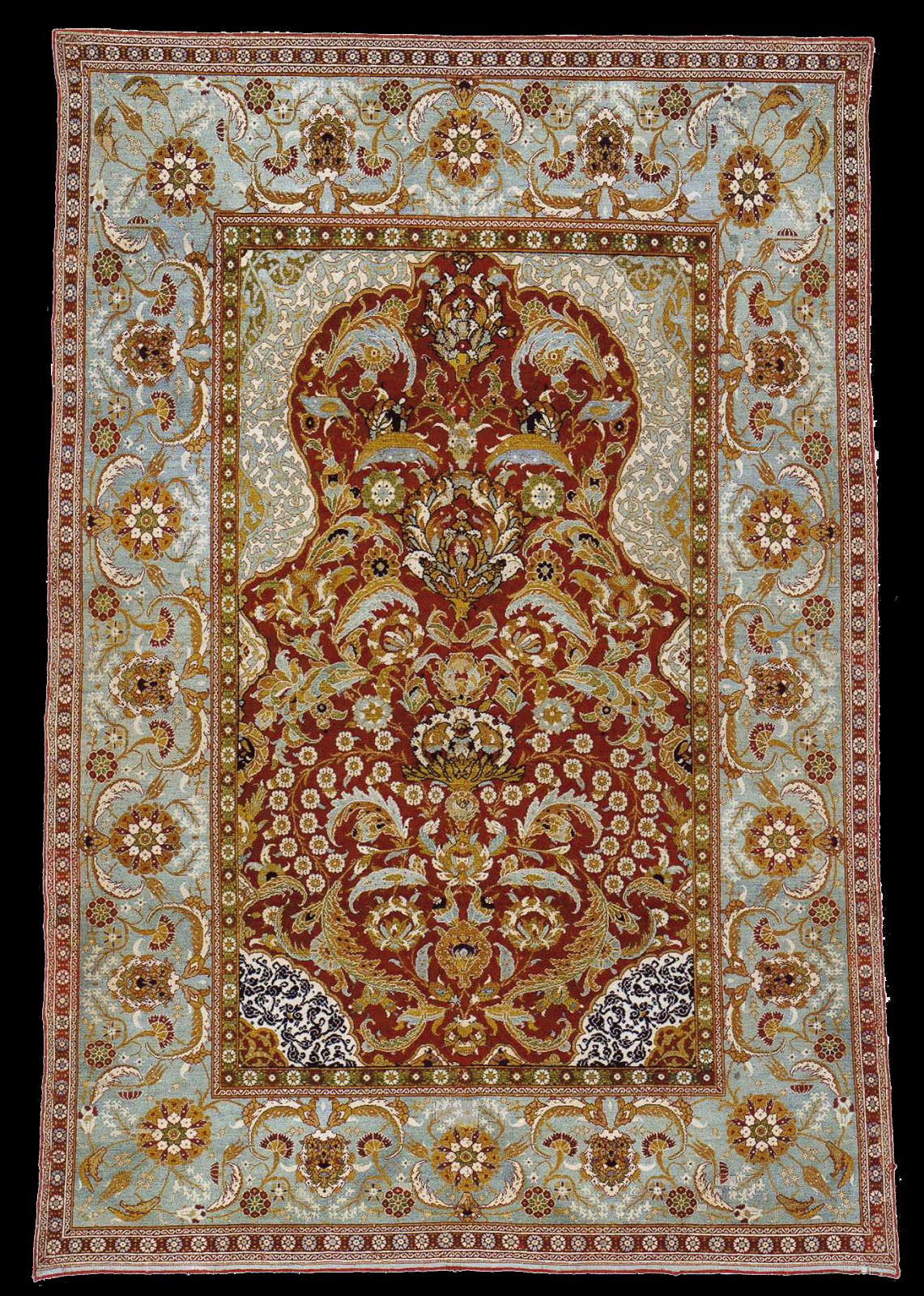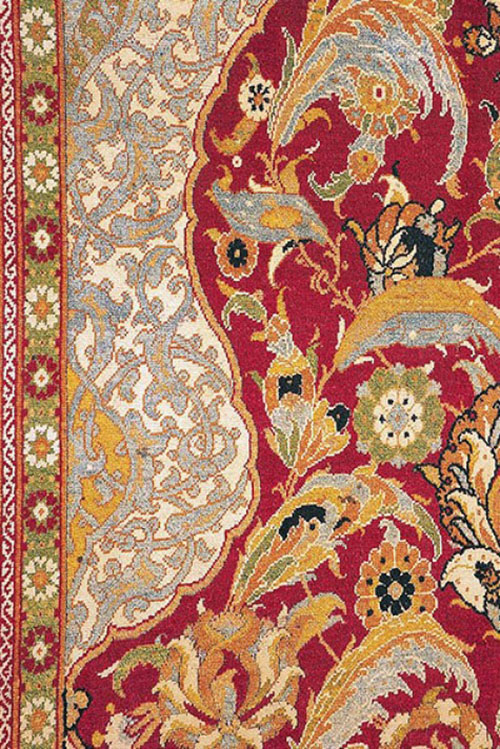|
Niche or prayer carpet, Ottoman Empire, Istanbul or Bursa or Cairo, 2nd
half 16th century. 181 x 127 cm, taken over from the Imperial Court in
1922. Austrian Museum of Applied Art
Warp, weft silk
Knots wool, cotton (white and light blue), asymmetric
Knot count 5600
Inv. no. T 8327/1922 IP
mten osmanischen Reich
reisen und arbeiten ließ.
The Ottoman carpet, almost perfect in
preservation, has an arch in its field that is characteristic of the genre
– a decorative element; or if the carpet was intended as a prayer carpet,
the representation of a mosque prayer niche, the Mihrab. The decorative
principle of the main border – strikingly expressive – also occurs in
large-format Ottoman carpets, as does the random combination of patterns.
Ottoman carpets with silk foundation are dated to the second half of the
16th century, created after the so-called Saz style in illumination and
ceramics had reached its highpoint. Sources record that there were court
manufactories for knotted carpets in Istanbul; however, Bursa remains an
option as the traditional
|
|
Typical of the Ottoman court style, also known as saz, are the mihrab with a
wavy arch, floral decorations, such as palmettes and rosettes, the typical
curving and lance-shaped saz reed leaf (also an element of other Ottoman
decorative arts) and a limited but refined color palette, such as light
blue, white and dark red. Floral prayer rugs of this type were made in the
Cairo and Anatolian royal works with so many similar characteristics, their
precise identification is impossible. Carpets with weft and warp in silk,
such as the specimen above, are nevertheless said to come from Istanbul or
Bursa, a production center near Istanbul.
|


